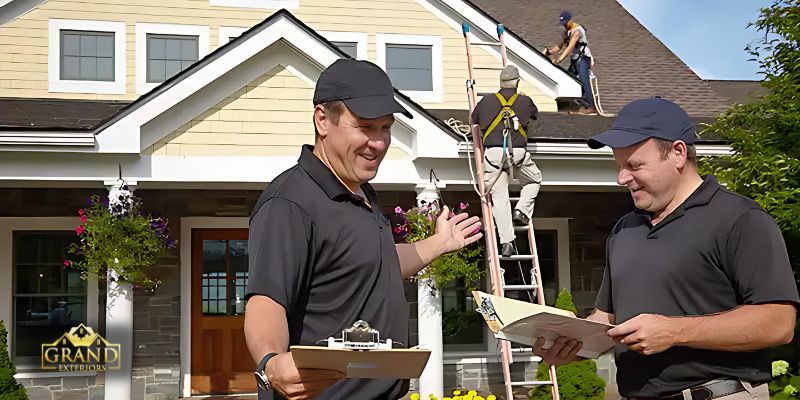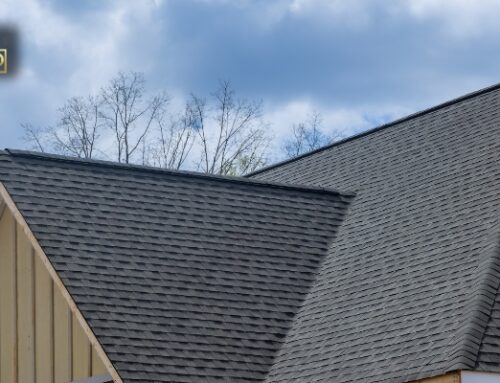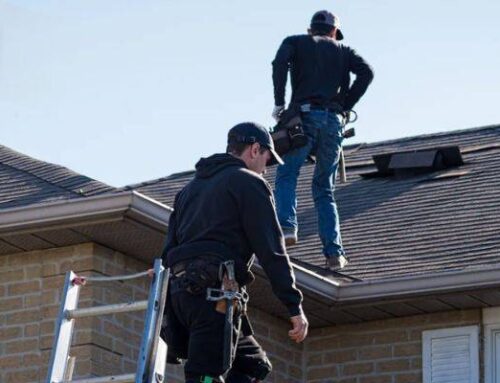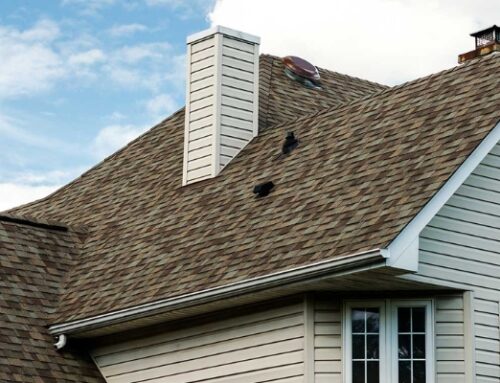Storms can wreak havoc on residential roofs, leaving homeowners to deal with the aftermath of damage. While it can be a stressful experience, understanding the insurance process can make the recovery smoother. In this article, we will guide you through the essential steps to take after storm damage to your residential roof.
Assess the Damage:
After a storm, it’s crucial to assess the extent of the damage to your roof. Look for visible signs such as missing shingles, dents, cracks, or leaks. Document the damage with photographs and detailed notes. This evidence will be essential when filing an insurance claim.
Contact Your Insurance Company:
Promptly contact your insurance company to report the damage. Provide them with a detailed description of the incident, including the date and time it occurred. Be prepared to share the documentation and photos you collected during the assessment. Your insurance company will guide you on the next steps and may schedule an adjuster to inspect the damage.
Schedule a Professional Inspection:
While waiting for the insurance adjuster, it’s wise to hire a professional roofing contractor for a thorough inspection. A qualified roofer can identify hidden damage, provide a detailed report, and offer repair estimates. Having this information will empower you during negotiations with the insurance company.
Understand Your Insurance Policy:
Review your insurance policy to understand the coverage limits, deductibles, and any exclusions related to storm damage. Knowing your policy details will help you navigate the claims process more effectively. If you have any questions, don’t hesitate to reach out to your insurance agent for clarification.
Obtain Multiple Repair Estimates:
Insurance companies often require multiple repair estimates before approving a claim. Obtain detailed quotes from reputable roofing contractors, ensuring they cover all necessary repairs. Present these estimates to your insurance adjuster to support your claim.
Be Present During the Adjuster’s Inspection:
When the insurance adjuster arrives to inspect the damage, be present to ensure they are aware of all the issues you’ve identified. Provide them with a professional inspection report and repair estimates. This collaboration can help ensure a fair assessment of the damage and a more accurate claim payout.
Document the Adjuster’s Findings:
During the adjuster’s inspection, document their findings and take notes on their assessment. Ask questions if you need clarification on any aspect of the evaluation. This information will be valuable if there are discrepancies between the professional roofer’s assessment and the adjuster’s report.
Receive Approval and Schedule Repairs:
Once the insurance company approves your claim, work with your chosen roofing contractor to schedule the repairs. Ensure that the repairs align with the insurance company’s requirements and follow local building codes.
Keep Records of Communication:
Maintain a detailed record of all communication with your insurance company, including emails, phone calls, and any written correspondence. Note the names, titles, and contact information of the individuals you speak with. This documentation can be crucial in case of any disputes or discrepancies throughout the claims process.
Emergency Repairs:
If your roof has sustained severe damage that requires immediate attention to prevent further issues, consider arranging for emergency repairs. Inform your insurance company about the urgency of these repairs and keep receipts for all expenses incurred. Many insurance policies cover emergency repairs that protect your property from additional damage.
Beware of Storm Chasers:
In the aftermath of a storm, some contractors, known as “storm chasers,” may approach homeowners offering quick and inexpensive repairs. Be cautious when dealing with such individuals and thoroughly vet any contractor before hiring them. Stick to reputable, local roofing professionals with a proven track record.
Know Your Responsibilities:
Understanding your responsibilities as a homeowner is crucial during the claims process. Most insurance policies require homeowners to take reasonable steps to mitigate further damage. Failure to do so may impact the claim’s approval. Follow your insurance company’s guidelines and consult with them before making any major decisions.
Consider Upgrades and Improvements:
While working on your roof repairs, consider discussing potential upgrades or improvements with your roofing contractor. Some insurance policies may cover enhancements that improve the resilience and longevity of your roof. Check with your insurance company to see if there are opportunities for upgrades within your coverage.
Be Patient:
The insurance claims process may take time, especially during periods of high demand, such as widespread storm damage. Be patient and stay in regular contact with your insurance company for updates on the status of your claim. Patience and persistence will contribute to a smoother resolution.
Appeal if Necessary:
If you are dissatisfied with the insurance company’s settlement offer, don’t hesitate to appeal. Provide additional documentation, estimates, or expert opinions to support your case. Insurance companies may reconsider their decision if presented with new information.
Know Your Rights:
Familiarize yourself with your rights as a policyholder. Each state has regulations governing insurance practices, and being aware of these rights can empower you during the claims process. If you encounter any difficulties or feel that your claim is not handled appropriately, consider seeking advice from your state insurance regulator.
Conclusion:
Navigating the insurance process for residential roof damage after a storm can be challenging, but with careful documentation, clear communication, and collaboration with professionals, you can successfully restore your home. Taking these steps will not only streamline the claims process but also help you achieve a fair and timely resolution.




